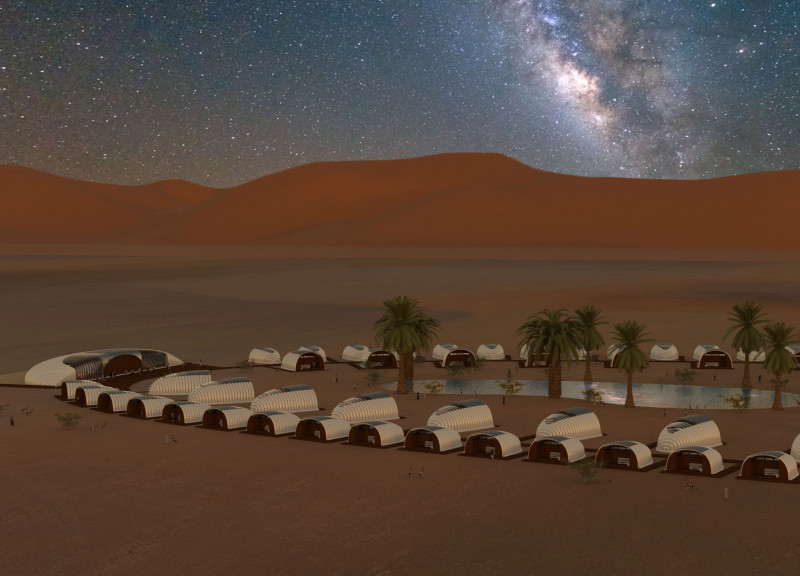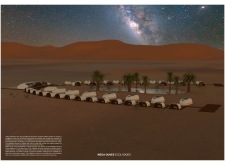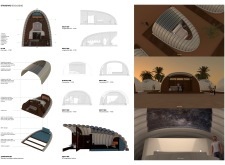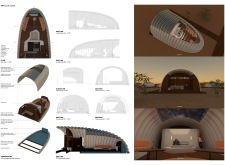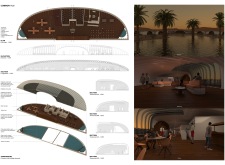5 key facts about this project
The design is situated in a harsh desert environment and draws inspiration from how desert beetles gather moisture. It focuses on sustainability and creating flexible living spaces that tackle water scarcity. The concept features an inflatable structure that can be easily transported and quickly set up, making it appropriate for remote areas. This approach emphasizes environmental responsibility while ensuring essential services like sanitation and cooling are accessible.
Water Collection System
A central feature of the design is an innovative water collection system that captures both dew and rainwater, which are essential for sanitation and cooling. The structure's irregular shape maximizes the surface area in contact with the air, allowing for effective condensation. Water vapor from the atmosphere condenses on the cool surfaces, forming droplets that are directed through specialized gutters. These gutters help keep the collected water clean and safe for drinking and hygiene, reinforcing the project’s commitment to holistic sustainability.
Thermal Comfort and Energy Efficiency
The structure is filled with cold air, which is then cooled by a system that uses fans powered by inflatable solar panels. This system provides effective temperature regulation, ensuring that the living spaces remain comfortable throughout the year. The roof is made of two types of inflatable fabric: white for thermal insulation and transparent for light and views of the night sky. This design element enhances the living experience and connects residents with the surrounding environment.
Spatial Organization
Each ecolodge is designed with function and comfort in mind. The layout includes essential areas such as a terrace, entrance, bathroom, toilet, washer unit, bedroom, living room, wardrobe, and desk. This arrangement makes efficient use of the space while fostering a sense of community among occupants.
In addition to the lodges, a common hub serves as a social gathering space. It contains areas for reception, additional toilets, storage, a kitchen, dining space, and a stage for events. This communal area encourages interaction, promoting social engagement among visitors.
The design’s unique roof structure effectively balances temperature control with an inviting atmosphere, enhancing the connection to the natural environment. Each aspect aims to provide both comfort and functionality in a challenging desert setting.


